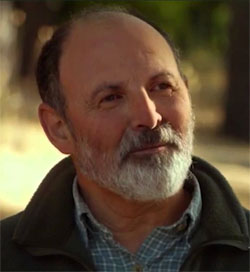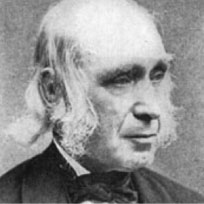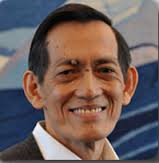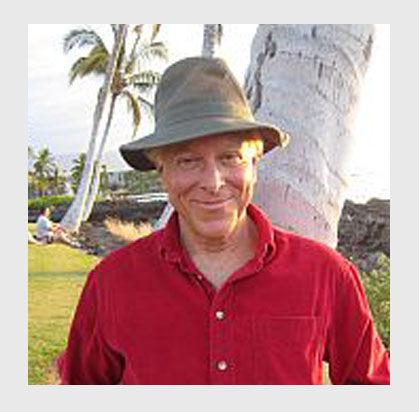Meeting Nature Face-to-Face
Printed in the Spring 2014 issue of Quest magazine.
Citation: Cornell, Joseph. "Meeting Nature Face-to-Face" Quest 102. 2 (Spring 2014): pg. 67-70
By Joseph Cornell
 Profound moments in nature foster a true and vital understanding of our place in the world. I remember an experience I had as a five-year-old boy that awakened in me a lifelong fascination for marshes and birds, and for a life lived wild and free.
Profound moments in nature foster a true and vital understanding of our place in the world. I remember an experience I had as a five-year-old boy that awakened in me a lifelong fascination for marshes and birds, and for a life lived wild and free.
I was out playing alone on a cold foggy morning when I suddenly heard a startling chorus of "whouks" coming toward me through the air. I peered intently at the thick fog, hoping for at least a glimpse of the geese. Seconds passed; the tempo of their cries increased. They were going to fly directly overhead! I could hear their wings slapping just yards above me. All of a sudden, bursting through a gap in the fog, came a large flock of pearl-white snow geese. It seemed as if the sky had given birth to them. For five or six wonderful seconds their sleek and graceful forms were visible, then they merged once again into the fog. Seeing the snow geese thrilled me deeply, and ever since then I have wanted to immerse myself in nature.
Being Fully Present
When outdoors, many people are so engrossed in their own private concerns that they notice little of their surroundings. I once demonstrated this to a group of twenty-five teachers in Canberra, Australia. I asked them to look at a beautiful tree as long as they were able to, and to raise their hands when their attention wandered from the tree and drifted to other thoughts. In only six seconds, every hand was raised. They were amazed to discover how restless their minds were.
Exposure to nature isn't always enough. A friend of mine discovered this when he took his eight-year-old son hiking in the Canadian Rockies. They hiked for several hours until they came to a spectacular overlook where they could see two glaciated valleys and several alpine lakes.
He said, "That view alone made our long trip from Iowa worthwhile." He suggested to his son that they sit and enjoy the mountain scenery. But the boy, who'd been running exuberantly back and forth along the trail, sat for five seconds, then scrambled to his feet and started running up the trail again. My friend said that he felt like screaming: "Stop! Look at this incredible view!"
How can we help others experience nature deeply when their minds and bodies are so restless? The secret I've discovered is to focus their attention with nature activities that engage their senses.
For example, in the Camera Game, which is played with two people (see below), the "photographer" taps the shoulder of the "camera" twice, and the camera opens his eyes on the scene before him. Because the camera looks for three seconds, his mind doesn't have time to daydream, so the impact of his "picture" is quite powerful. Players of the Camera Game have told me that they've retained a vivid memory of their pictures for five, even eight years afterwards. This activity helps people of all ages experience what it is like to truly see.
Other examples of simple, absorbing activities are mapping natural sounds, writing an acrostic poem about something captivating, drawing one's best nature view, and an exercise called "Interviewing Nature," in which you look for a special rock, plant, or animal that has an interesting story to tell. Then you ask it questions like, "What events have you seen in your life?" "What is it like to live here?" "Is there something you would like to tell me?"
The psychologist Abraham Maslow described peak experiences as especially joyous, with "feelings of intense happiness and well-being," and often involving "an awareness of transcendental unity." Mountaineers commonly report having these experiences. The great naturalist John Muir, in the following passage, explains why:
In climbing where the danger is great, all attention has to be given the ground step by step, leaving nothing for beauty by the way. But this care, so keenly and narrowly concentrated, is not without advantages. One is thoroughly aroused. Compared with the alertness of the senses . . . one may be said to sleep all the rest of the year.
The intense focus required by wilderness pursuits such as climbing heightens our awareness. This is why so many people avidly enjoy them.
Leaders can encourage peak experiences on less wild walks by using experiential activities that direct people's complete attention on nature. Concentration is concentration; people benefit from increased perception wherever they are. One educator, who hikes the Appalachian or Pacific Crest Trail every summer, practiced an exercise called "I Am the Mountain" for just four minutes. In this exercise, participants look for something in nature that attracts their eyes, then feel its living essence in their own hearts. Afterwards, he said enthusiastically, "I was able to experience a state of heightened awareness that usually takes me a month in the wilderness to feel."
Finding the Forest Within
Science can only describe a flowering cherry tree; it cannot help us experience the cherry tree in its totality. To develop love and concern for the earth, we need deep, absorbing nature experiences; otherwise, our relationship with nature will remain distant and abstract and will never touch us deeply.
Rita Mendonca is Brazil's national coordinator for Sharing Nature, an organization dedicated to increasing awareness of nature in children and adults. She recently gave a training program in the Amazon for professional ecotourism guides, some of whom had worked in the area for forty years. Their attitude at first was that she had little to teach them. But after participating in several experiential Sharing Nature activities, a woman approached Rita and said with deep emotion, "You are helping me find the forest inside of me! We don't know the forest in this way!"
Absorbing experiences bring us face-to-face with nature. The observer and the observed become united—and only then are true empathy, knowing, and love awakened in the observer's heart.
John Muir said that the content of the human soul contains the whole world. The deeper purpose of experiential learning is to broaden our experience of life and include other realities as our own. When one is immersed in nature, Muir said, the "body vanishes and the freed soul goes abroad." Only by expanding our sense of identity beyond our physical body and egoic self can we commune with distant horizons, brightly colored songbirds, and countless other delights.
When people are quiet and receptive, fully immersed in nature, insights on the real purpose of life reveal themselves. David Blanchette is a teacher at the Punahou School on Oahu Island, Hawaii, where every year he leads his thirteen-year-old students on an inspirational nature walk along a remote and wild coastline. Below are some of his students' thoughts about life and nature after playing reflective, experiential Sharing Nature activities:
- It made me feel like I was actually a part of the sand and ocean.
- I was a calm ocean wave gently rolling towards the shore. I was the reef, feeling the cool water roll over me.
- I felt euphoria. I felt like I was one with everything around me.
- It felt powerful, yet peaceful. Every part of me is moving and flowing in harmony.
- Watching the turtle swim carefree reminded me that I have nothing to worry about.
- If you find beauty within the world you can find it within yourself.
Jessica, one of David's students, wanted to express her appreciation for the ocean, so she gratefully wrote "thank you" in the sand—and let the ocean waves embrace her sentiment and take it into itself.
Fostering in others beautiful human qualities of humility, respect, love, and joyful harmony with one's environment inside and outside of oneself—as expressed by the Hawaiian students—is what nature education is really about.
Becoming Good Stewards
A teacher in the Southwest once asked the children in his class to draw pictures of themselves. He recalled, "The American children completely covered the paper with a drawing of their body, but my Navajo students drew themselves differently. They made their bodies much smaller and included the nearby mountains, canyon walls, and dry desert washes. To the Navajo, the environment is as much a part of who they are as are their own arms and legs." The understanding that we are a part of something larger than ourselves is nature's greatest gift. With it, our sense of identity expands and, by extension, so does our compassion for all things.
In order to create a society that truly reveres the natural world, we must offer its citizens life-changing experiences in nature. Teresa of Avila said, "The soul in its ecstatic state grasps in an instant more truth than can be arrived at by months, or even years, of painstaking thought and study." One moment of deeply entering into nature can inspire in us new attitudes and priorities in life that would take years to develop.
When people feel immersed and absorbed in the natural world, they are learning the highest that nature has to offer—because nature herself is their teacher.
Joseph Cornell (Nayaswami Bharat) is the author of Sharing Nature, The Sky and Earth Touched Me, and Listening to Nature. He is the founder and president of Sharing Nature Worldwide: www.sharingnature.com. A swami and disciple of Paramhansa Yogananda, he has been a student of Swami Kriyananda since 1975 and is a longtime resident and minister of Ananda Village in Nevada City, California.
See how willingly Nature poses herself upon photographers' plates. No earthly chemicals are so sensitive as those of the human soul. —John Muir

The Camera Game is played with two people: one person is the photographer and the other the camera. The photographer guides the camera—eyes closed—on a search for beautiful and interesting pictures. When the photographer sees something he likes, he points the camera at it, framing the object he wants to shoot.
The photographer signals the camera to open his eyes (the lens) by tapping twice on the camera's shoulder. A third tap three seconds later tells the camera to close his eyes again. For the first picture, it may help to say "Open" with the first two taps, and "Close" with the third.
It's important that the camera keep his eyes closed between pictures, so that the three-second "exposure" has the impact of surprise. Encourage photographer and camera to remain silent (speaking only if absolutely necessary) to enhance the camera's experience.
Participants have often told me that they've remembered the images of their "photographs" for more than five years. In addition to the visual power of the exercise, the camera, during his periods of sightlessness, will also experience a magnification of his four other senses.
After taking four to six photographs, the camera and the photographer trade places.
Because the experience is so compelling, a beautiful rapport is established between the photographer and the human camera. It's heartwarming to observe grandparents and grandchildren—and other pairings—carefully guide each other and delight in the wondrous scenes of nature around them.
You can experience how the Camera Game intensifies awareness on your own. Select an outdoor site with varied terrain that's mostly clear of obstructions. Since you'll be walking alone, take along a hiking staff or pole for security and guidance.
Choose a safe route leading to interesting features such as large rocks, trees, and, perhaps, an arresting view. Close your eyes and begin walking, feeling the warmth of the sun and the wind blowing against your body. Notice your leg muscles compensating for the unevenness of the terrain, and the insects singing and buzzing nearby.
When you sense that you're near something intriguing, open your eyes to take its picture. (Looking for the suggested three seconds keeps the attention sharply focused on the subject the whole time. The mind tends to wander when the exposures are longer.)
Continue to tread carefully while taking a few more photographs. As you walk, you can (as needed to stay on course) open your eyes just enough to detect blurry shapes.
After you and your partner have played both roles, each of you can sketch from memory one of the pictures he took while playing the role of camera. Then have each camera give his developed picture to the photographer he partnered with.
More Camera Game Tips
1. Sensitively guide the camera by holding his hand and gently pulling his arm in the direction you want to go. Go slowly and remain watchful for obstacles on the ground, such as low-lying tree branches.
2. Make the photographs stunning by taking shots from unusual angles and perspectives. For example, you can both lie down under a tree and take your picture looking upward, or you can put your camera very close to a tree's bark or leaves.
3. You can prepare the camera for the next picture by telling him which lens to use. For a picture of a flower, tell the camera to choose a close-up lens; for a sweeping scenic panorama, a wide-angle lens; and for a faraway object, a telephoto lens. Such specific instructions help the camera focus on the intended subject when it may not otherwise be obvious.
4. Photographers can also pan the camera—that is, move it slowly with the shutter held open, like a movie camera. While panning, you can keep the shutter open longer, since the movement will hold the camera's interest. You can also pan vertically—for example, start at the base of a tree and slowly move up the trunk to the highest branches.
—Joseph Cornell


 Mr. Alcott: Jesus was at Cana the last time we read of him and received a visit from a nobleman of Capernaum. Today we find him at Nazareth. (Reading:)
Mr. Alcott: Jesus was at Cana the last time we read of him and received a visit from a nobleman of Capernaum. Today we find him at Nazareth. (Reading:) The aim of education is to prepare young people for life. What is this life that we are preparing for?
The aim of education is to prepare young people for life. What is this life that we are preparing for?